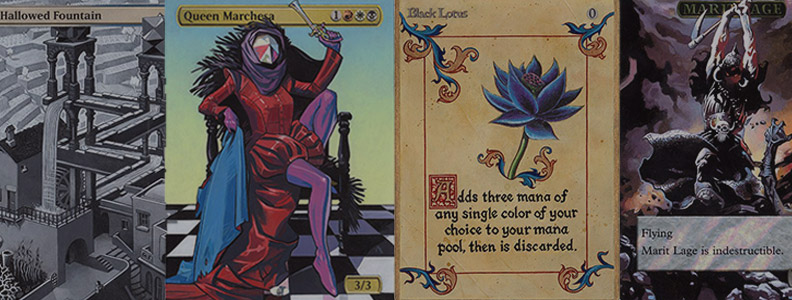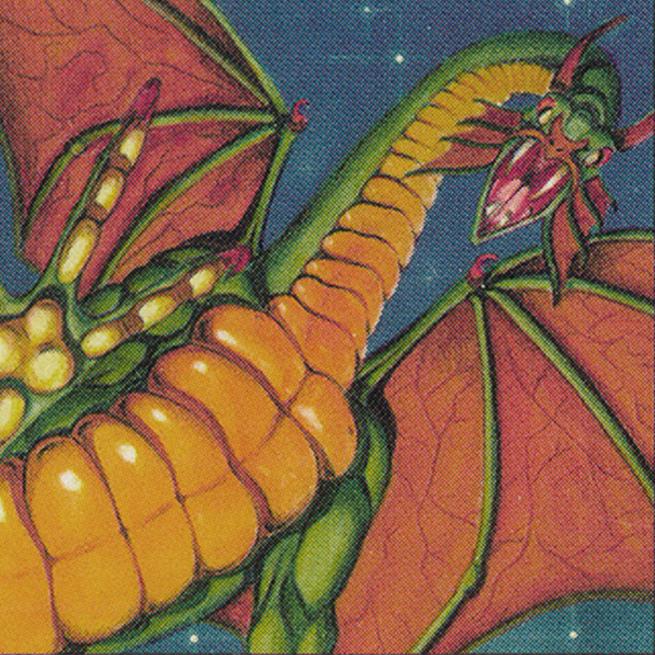Welcome to our artists interview series There's no Magic without art, where we talk to artists about their work on Magic: The Gathering.
This week we're gonna do something different: we talked to an artist who paints on Magic cards for a living.
We interviewed Eric Klug, of Klug Alters, who has done some of Magic's most famous card alters. Here's what he told us.
You started playing almost 20 years ago, and you've played at all levels of competitive play from FNM to the World Championships. How do you feel about the state of the game today?
I think the game looks to be doing better than ever. For that, I'm very happy as I plan to keep playing for a long, long time. I do think the game is heading in directions looking to be more successful, and sometimes that can be a little alienating to entrenched players like me because the focus is on obtaining new players.
Ultimately though, I know the people who are responsible for the game cherish it as much as I do. New players is essential to the games survival. So I try not to worry much.
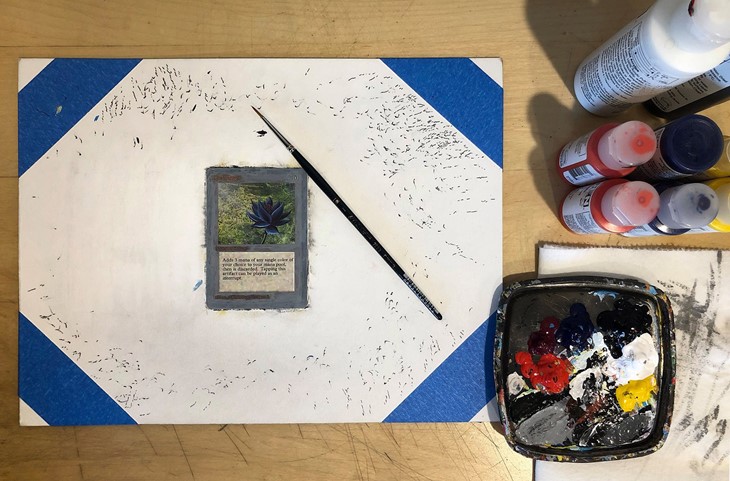
You made your first alter back in 2008. You traded it, and six years later the card was sent back to you. Can you give us some insight into how you started, and how did that card (Wall of Blossoms) get back to you?
I tried out altering after discovering others work on online forums. It was very much a hobby for several years. After living abroad 2009 to mid-2010 I came back to the US and altered cards to supplement while I job searched. Things took off from there.
I traded the Wall of Blossoms that same year to a friend who went on to trade it to someone else. It eventually made it to a client years later who was aware it was my first and thought I might appreciate it more than he would. He was right! I'm not very sentimental about my work but was really moved to own the card again and by the client's kind gesture.

Do you have some other work-related stories you'd like to share?
The only thing I can think of, off the top of my head, is that in 2008 my now-wife asked if I could make a living altering. I laughed and shook my head, "No way."
</strong>From a business owner perspective, what has changed since you first started doing alters?</strong>
When I was growing up with the game an alter would usually be done by one of Magic's official artists. It would be done with the same materials that they signed the cards with and would usually be limited to a small doodle/sketch.
Altering already started as taking customization well beyond a quick drawing. There were a lot of border extensions (extending the original artwork over the borders, blending printing with paint) when I first started.
Overall I'd say the work has become considerably more ambitious. In terms of detail, I'm working on projects I didn't think would be possible ten years ago.
Also I think quality alter work has earned a lot more respect and a long term place in the community. It could easily have been just a fad within the game, but I think players see the art in it and therefore the added value that can come with a well concepted, well executed piece. Value both in terms of dollars and that of improving one's gameplay experience.
Can you give us some insight into the process of restoring heavily damaged cards?
Working on damaged cards is much the same as working on pristine ones. What's different is making sure the cardboard is a strong enough canvas. Water-damaged cards, for example, can be a lost cause. Altering can do a lot to mask minor dents, scuffs, and the beginning of shuffle creasing.
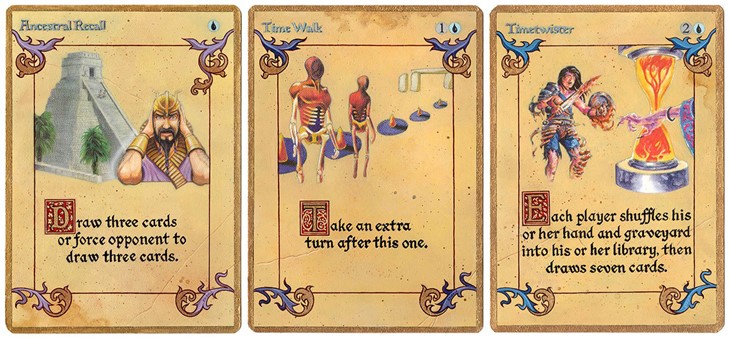
I usually just examine the card, clean up any dirt that it has accumulated over the years, and the paint does much of the rest. Another added benefit is that the thin layer of acrylic adds a bit of structural integrity to the card and slows any further deterioration.
Other than time constraints, what would make you reject a commission?
If I thought the alter was inappropriate in some way. If it's not my style and I think it would be hard to connect with the work. Or if I just don't feel confident I could produce something totally awesome based on what the client is asking for. High quality, show stopping pieces is really my goal for each card and I take that into account when considering commissions.
Five years ago, you mentioned that Stephen Hawking JtMS was the weirdest card you've done. Is this still true today?
It's up there but it's hard to say. I've done a lot of alters since that one. This one from 2015 is pretty weird. I like it. Weird is good.
How many Black Lotuses have you painted?
I've altered 12 Unlimited Black Lotuses over my past ten years of painting cards. So a little more than one a year. I'll point out that's .068% of all the Unlimited Lotuses printed (~17,500). A lot of players draw a line when it comes to altering power but I think many don't realize there is still a fairly large number of unaltered copies out there. Even if I paint 50 more I won't crack half a percent.
Let's say I email you inquiring about a commission. How would we go from here?
First and foremost I need to like the concept. It needs to make sense to me because the more fun I can have with a project, or the more excited I can get about it, the better the result. I'm fairly discriminating in the alters I take on because I put a lot of hours into each piece and have limited time to spread around.
Beyond that I'll quote the client a price and let them know when we can get the project going. I only fully commit to a months work at a time to keep my queue from ballooning too much. It would be really easy to book a few years worth of work in just a few weeks, but that'd be pretty overwhelming for me and no client wants to wait that long.
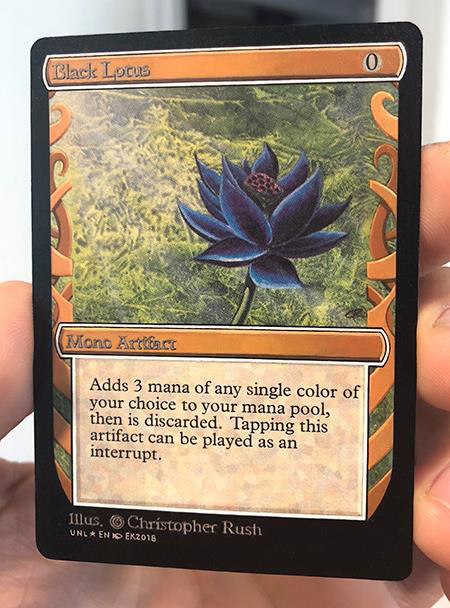
Your work based on Hieronymus Bosch and Escher challenged my assumptions on what's possible to do in an alter.
What are the inherent limits of working directly on such small cards?
There is a point where you can only fit so much detail into a certain amount of space. There's also a limit to the amount of detail the human eye can perceive. I've definitely tried to push the boundaries over the years of what's possible.
I'm pretty happy with the tools I've selected in allowing me to do so (brush and paint quality). Like anyone else, it's mostly just practice then. Even after a decade I can still improve.
Have you done any Magic related commission other than card altering?
A few months ago I worked on playmat that several official Magic artists has also worked on. The piece in question was a homage to Quinton Hoover and Christopher Rush who are sadly not with us any more. I don't typically take on playmat projects but this one felt right. A Lotus of course:
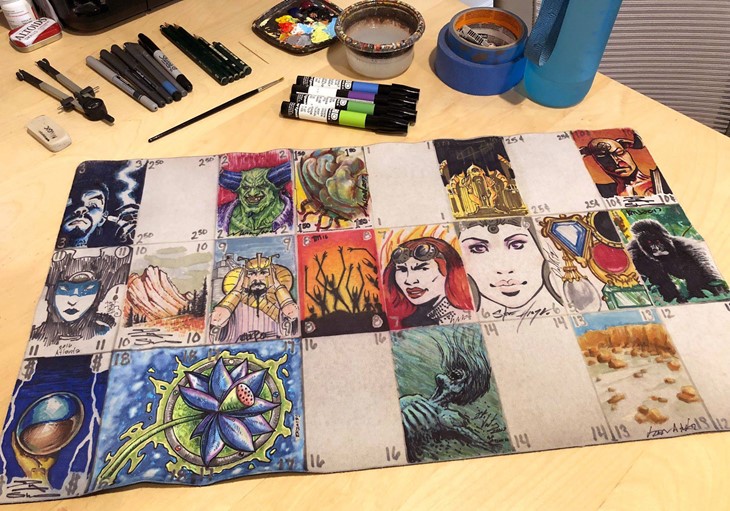
Did you take some time to develop a non-alter portfolio?
I do non-alter commission work occasionally for a variety of clients and open air landscape painting for fun. Some of that work can be found here.
You can follow Eric's work on Facebook and on Twitter!>.
